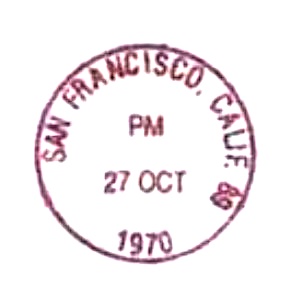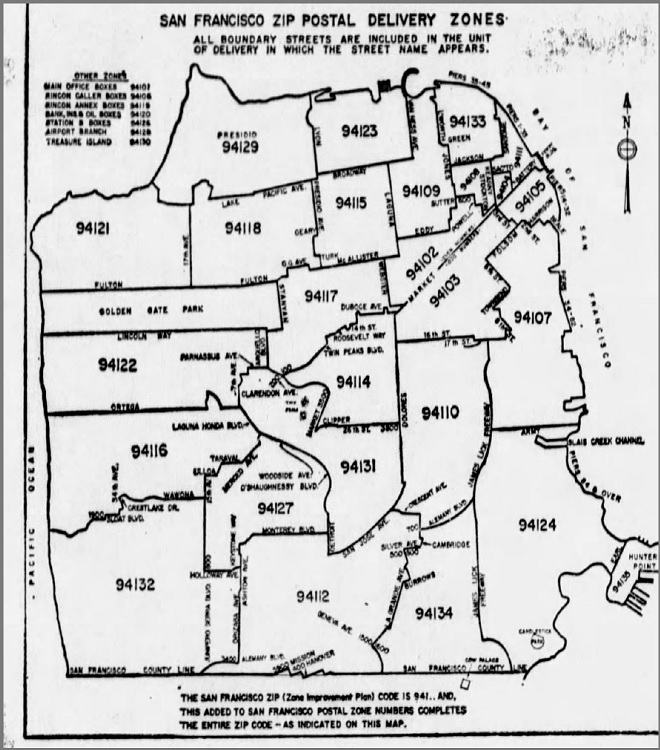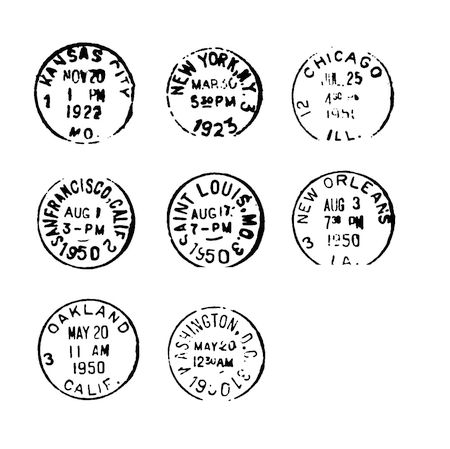On thing that kind of jumps into my mind, in relation to the sudden shift of mailing drop locations out of San Francisco with the ‘Pleasanton’ letter to the Los Angeles Times in March of 1971, has to do with Berkeley. I have noted that a number of people that I have come across living in Vallejo worked at the ‘Berkeley Radiation Laboratory’ on, or near, the campus of the university. As I understand it, from the early 50s this laboratory effectively expanded out to Livermore in an attempt to create a rival to the Los Alamos research centre. I believe that, although classified work continued at Berkeley until around 1970, it subsequently dumbed down, so that you could imagine there might be a migration from Berkeley to Livermore around 1970. And, of course, all roads between the two effectively go through Dublin/Pleasanton, with Livermore just beyond to the east.
“This isn’t right! It’s not even wrong!”—Wolfgang Pauli (1900–1958)
If he worked at the Lawrence Lab, how would he have mailed the San Francisco weekday letters?
Does the top of the 6/bottom of the 9 match? It looks like more curl to the top of the 6.
I’m a little confused by the discussion in relation to this postmark stamp. Not because I don’t think that the code on this one looks like a ’68’, because it does. Rather, my confusion is around believing that this is not, in fact, the postmark from the Halloween card envelope.
If you look at the photocopy from the FBI files, which Cragle posted around May 07 IIRC – which you have to believe is the one we should be looking at – there are indisputable differences.
In the FBI copy, there is some distortion from the circular, which I have corrected in making the comparison below (FBI on right):
You will immediately be able to note the following differences:
[list=1]
the actual postmark on the right has "San Francisco CA," that on the left "San Francisco Calif."[/*:m:2dcojab5][*]the year on the right is more spaced and separated by some distance from the circle edge at the bottom;[/*:m:2dcojab5][*]likewise the date (d/m) is more spaced and more off center towards the year;[/*:m:2dcojab5][*]the ‘PM’ is more spaced on the right, and relatively larger.[/*:m:2dcojab5][/list:o:2dcojab5] You will also notice that the postmark in the copy of the FBI letter has the line through it where – as on many of the Zodiac documents – an area has been marked as being potentially of interest for fingerprints.
Basically, I cannot say where the postmark stamp on the left is from, but it is clearly not that from the envelope of the Halloween card and hence must be ignored for comparison purposes.
I would then want to suggest that to my view – and from the point of view of consistency with other marks – the mark in question at 4 o’clock reads as ‘6B’.
We have already ascertained that the postmark is 6B, the red postmark is actually from a replica card that was promotional material made when the 2007 Zodiac film was released.
We have already ascertained that the postmark is 6B, the red postmark is actually from a replica card that was promotional material made when the 2007 Zodiac film was released.
Okay, I can see now where the replica idea was mentioned in an earlier post by Xcaliber, IIRC, but hadn’t noted any follow-up so didn’t necessary know whether the idea had been accepted or not. Thanks for the clarification, Cragle.
“This isn’t right! It’s not even wrong!”—Wolfgang Pauli (1900–1958)
Unfortunately Richard this is not the case, if you look at the link you attached the letters and numbers you refer to (3rd List on page) are the planning departments districts and not the postal zones.
District 4 on the Realtor map shows :-
4a Balboa Terrace, 4b Diamond Heights, 4c Forest Hills, 4d Forest Knolls etc.
Whilst the 4 Postal zone (94104) is Financial District.
This is the trap we fell it to before.
I think that this is a very important thread, seeking a very worthy goal in trying to gain some detailed information about where the various letters may have been mail-dropped. I have spent the last few days following through the very detailed and well-considered analyses, but have to say that I personally remain to be convinced about the current interpretation of the 2-digit codes on the postmarks.
If I understand the current position correctly, these codes are being interpreted as equating to the post-1943 (pre-zip) zoning address system, which applied to the major US cities and used one or two numbers to designate the zones. Again, if I understand it correctly, these designations (with single digits, 1-9, being preceded by a zero) were then incorporated into the new Zip code system launched in 1963 as the last two digits, with the first three (for San Francisco) being ‘941’.
This is what I believe is being shown in the previously-posted ‘zip postal delivery zones map’, here:
The idea then appears to be that if you drop off the ‘941’ for each zip you get the post-1943, pre-1963 zoning system, which I would agree with.
What I struggle to be convinced about, however, is that the postmarks are likewise using this system.
Although it is not an easy search, I have spent some time browsing for examples of San Francisco postmarks from 1969 online. Given the current supposition, I would have expected these random examples to be broadly scattered, with codes like ’16A’ or ’32B’. My experience, however, was that I was not able to come up with any examples that weren’t a single digit and single letter combined, as in the majority of the Zodiac mailings.
Furthermore, I did some research into the rationale for the 1943 introduction of the ‘zoning address system’, which appears to have been triggered by the numbers of experienced postal service workers being called to serve in the military. In a detailed history of the US Postal Service, I read that:
Under this system, delivery units or zones were identified by one or two numbers between city and state – for example, Birmingham 7, Alabama – so that mail could be separated by employees who did not have detailed scheme knowledge.
In particular, what seems to be evident is that the 1943 zoning system – as, essentially, the modern zip system – is a system specifically for designating mailing destinations, which is what I would expect.
I appreciate that later postmarks, such as that on the Pleasanton letter, started to incorporate the zip code to indicate where the letter was marked (as opposed to destination). However, I have not seen evidence to suggest that this was the case in the older postmarks, and would regard it as much more likely that the postmarks we have convey archaic designations that are not following the postal zoning ‘destination’ system.
Until I can put my hand on an example of a 1969 postmark example that is marked something like ’24A’ – and am presented with some explanation of the letter at the end – I have to say that I would still lean towards something akin to the realtor zoning as explaining the codes.
“This isn’t right! It’s not even wrong!”—Wolfgang Pauli (1900–1958)
My initial remarks regarding the realtor map pertained to having a realtor map of the time. Cities change over time. So I thought it important to have one. It has evolved from there.
Given the 89 speculation of it being machine service code (no list of codes provided), the number/letter combination, could as well be machine service code.
More work clearly needs to be done for 100% certainty on either avenue.
Can it be shown that another city of equal or better size as San Francisco, in another state, follows a similar realtor/postmark designation? That I think would be significant given the uniformity of the USPS.
Soze
Or try to track down a San Francisco postal worker from that time and ask them for clarification.
Or try to track down a San Francisco postal worker from that time and ask them for clarification.
I think that this is the way. Specifically, someone who was involved closely with the process of setting up and applying the postmarks.
“This isn’t right! It’s not even wrong!”—Wolfgang Pauli (1900–1958)
This was my understanding from posing the question a while back to a USPS operations employee:
The letters with the two digit code (1A, 6B etc) would have been brought from the mailbox to the nearest post office, and processed there. During that process, the sub-zones (1A, 6B) would have been noted in the postmark, to reflect the specific batches of mail that were picked up in the specific sub zones.
The Z letters that do not contain the two-digit codes would have been apparently processed at a central facility and not the local neighborhood post office.
Can it be shown that another city of equal or better size as San Francisco, in another state, follows a similar realtor/postmark designation? That I think would be significant given the uniformity of the USPS.
Although not directly answering your question, I just happened to stumble across a couple of postmarks in the FBI files that use similar designations. These are for Oakland and Sacramento, both CA of course. I haven’t had time to research yet, but it will be useful to investigate whether these cities even have a zoning numbering system similar to the one in San Francisco. If it turns out they do not, then … well, lets see first, before I try and interpret without data!
“This isn’t right! It’s not even wrong!”—Wolfgang Pauli (1900–1958)
.
Yes, dyslexia is probably my first undiagnosed language.
.
Yes, dyslexia is probably my first undiagnosed language.
Thinking about how the postmarks appear to change around 1971, moving towards apparently including the zip code as the designator of the point of origin/collection, it is probably important to note that the ‘United States Postal Service’ (USPS) as such was actually officially formed only on 01 July 1971, under the Postal Reorganisation Act (Nixon) of August 12 1970. Its predecessor was the ‘United States Post Office Department’. It thus seems likely that the postmark scheme that we’re investigating was probably archaic by this time and discontinued only under this transition. Change happens slowly, and sometimes only when it is prompted to through such major reorganisations. This would, then, perhaps go some way to explaining why the old (non-zip) form hung around for some while after the introduction of zip codes.
It would also appear that the letter in the designation was an extension of an earlier system that was broader and just used the numbering, as the following earlier postmark examples seem to illustrate:
“This isn’t right! It’s not even wrong!”—Wolfgang Pauli (1900–1958)
Regarding Eureka Card, i just read now that the keys were traced to a person named Sam in Eureka.
Harvey Colliver’s Daughter (Cheri Silva?/Colliver) Was in a relationship with a man or woman named Sam and they lived North of Eureka, Their relationship failed in 1988 and 1990 to be specific.
I just think Harvey needs to be looked at some more, there’s just too much.
Anyway sorry for the distraction.
Right, different thread!







